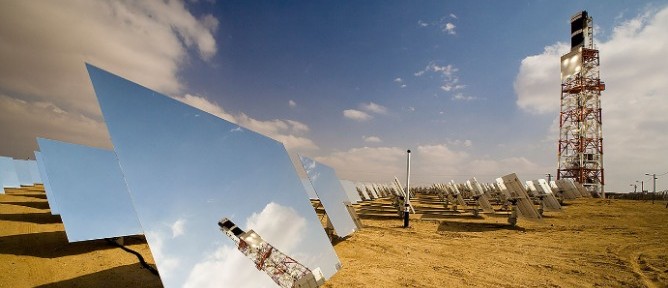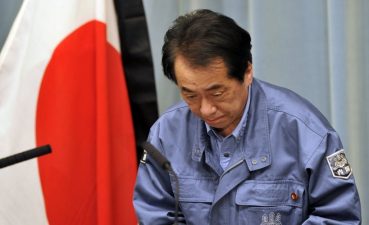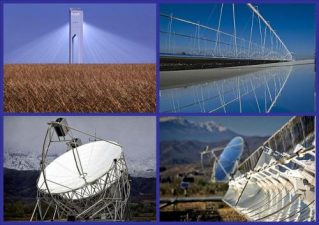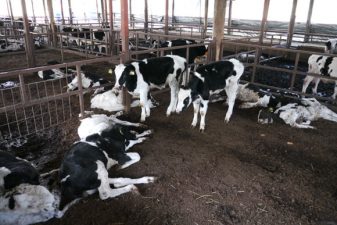It will be the fifth largest solar plant in the world when done. The earth revolves around the sun, and so does the green-tech industry. Some of the earliest pioneers of solar energy started in Israel 30 years ago with the company Luz.
Luz went on to become Luz II, then BrightSource, which is now a US-based solar power company about to flip the switch on a massive 377-megawatt solar thermal farm in the California desert.
And at the start of 2014, the sun and stars will align and a dream will be coming true for Israeli solar pioneers and visionaries like BrightSource Israel CEO Israel Kroizer.
BrightSource will break ground on one of the world’s largest solar thermal energy plants, in Israel. The Ashalim plant is expected to produce 121 megawatts of solar energy in the Negev Desert by 2016, providing enough “green” energy to fuel 40,000 Israeli homes.
After many bureaucratic hurdles, BrightSource –– which uses mirrors called heliostats to focus the sun’s rays on a tower to create steam to drive turbines –– is finally returning “home” and is fulfilling a dream to help make Israel energy secure, says Kroizer.
He was with BrightSource from its genesis and says that the new solar plant, developed by the Megalim consortium of BrightSource and France’s Alstom SA, is more than a business deal — it’s personal. BrightSource, he notes, employs about 400 people, 300 of whom are engineers and development staff working mainly in Jerusalem, where its international R&D happens.
Sunning the engineers close to home
“The staff is very happy to be working in the country, in Israel. It’s a real help to have a big project next door to us,” he tells ISRAEL21c. “We will learn a lot from it, instead of flying 10,000 miles to California every time we want to learn something.”
The $1.1 billion solar thermal energy plant being developed in Israel is the country’s first large-scale solar energy field, and one of the biggest of its kind in the world. It will heighten Israel’s prominence on the map of clean-tech entrepreneurship and green energy production.
Kroizer says: “The government gave us a very good structure and we appreciate it very much. The way we will run this project is as though it will be the crown jewel of all our projects. Yes, even over our project in California.
“The Israel project is close to us and everyone involved in it wants to make it the best,” he tells ISRAEL21c, not disclosing any financial developments still in sensitive boardroom talks.
Putting the BrightSource deal into proportion, Israel’s Ketura Sun was the first to launch a mid-size solar energy field in 2011.
Ketura was developed by Arava Power Company and Yosef “Kaptain Sunshine” Abramowitz. It produces five megawatts of energy, a fraction of what the BrightSource plant will provide. Arava, however, is expected to produce an additional 58.5 megawatts in the future, based on contracts it won in 2012.
Unlike the Suntech photovoltaic (PV) panels used by Arava, which convert the sun’s power into electricity directly, BrightSource focuses the sun’s rays from hundreds of ground-based mirrors to a collection tower. There the solar heat boils water to create steam to drive power turbines.
The solar thermal route is somewhat more complicated, and therefore expensive, than PV panels.
Kroizer says the two types of technology serve two different markets. “Almost every country installing solar energy is installing both kinds of solar solutions, in a certain proportion, to compensate for the grid’s limits,” he says.
Stabilizing the grid
He also argues that thermal storage is more suitable to the grid.
“With PV, you get energy when the sun is ‘on.’ When the sun is ‘off,’ you don’t have energy. The difference in the cost is basically compensating for this value of more stability in the grid, which is what the grid needs.”
Another advantage to the BrightSource technology is that the heliostats can be positioned on uneven ground, unlike PV panels.
Despite its developments in America, BrightSource still faces hurdles there: It pulled out of a recent American IPO, it has lost valuable energy buy-back contracts this past year; and CEO John Woolard recently stepped down, reportedly to spend more time with his family.
Meanwhile, the company is working on the paperwork to win a tender for a second solar thermal plant in Israel to produce about 60 megawatts, at the same time it secures financing for the bigger Ashalim project.
For business travelers and the curious who are coming to Israel, BrightSource has a pilot six-megawatt project in operation in the Rotem Industrial Park built in 2008, open to the public. A new visitor center may be built at the Ashalim plant if there is enough interest, says Kroizer.
This story was first published on ISRAEL21c – www.israel21c.org





One thought on “BrightSource Builds 121 MW Solar Thermal Baby in Israel”
Comments are closed.